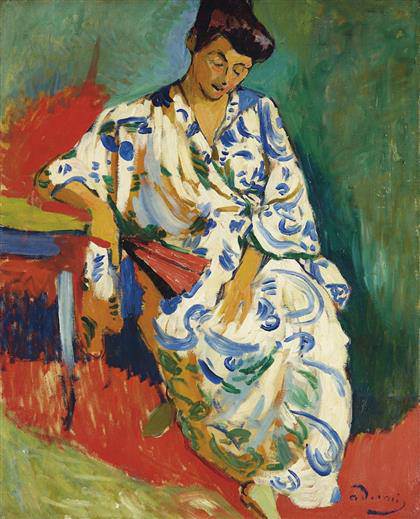
Jackson Pollock: “The Blue Unconscious“, 1946
Pollock’s ‘The Blue Unconscious’ to be sold at Sotheby’s On 14 May 2013 Sotheby’s New York will present “The Blue Unconscious” by Jackson Pollock as a major highlight of the Contemporary Art Evening Sale.]]>
March 24, 2013, source: Sotheby’s
The monumental canvas (84 x 56 in., 213.4 x 142.1 cm.) waspainted in the critical year of 1946, just prior to theestablishment of the artist’s celebrated drip paintings. Pollockexecuted the present work in the famed Long Island barnstudio he established after moving to East Hampton with hiswife, Lee Krasner, the prior year to escape the pressures ofthe New York City art world. The canvas has remained inthe same private collection for nearly 50 years having lastappeared on the market in a 1965 auction at Parke-Bernet.The appearance of the work on the market comes justmonths after Sotheby’s set a new Pollock auction record withNumber 4, 1951 which sold for $40,402,500 (est. $25/35million) in November 2012. The Blue Unconscious isestimated to bring $20/30 million and will be shown inSotheby’s Los Angeles galleries from 22-24 March 2013ahead of exhibitions in London and New York prior to theMay auction.
In the fall of 1945, Pollock and Krasner relocated to East Hampton on Long Island. Beginning in Spring 1946,Pollock worked feverishly on two series of paintings as he prepared for his fourth and final one-man exhibition atArt of This Century scheduled to open January 14, 1947. The “Accabonac Creek” series named for the harbor andwaterway that could be seen from his Long Island property, was executed in the makeshift studio in the upstairsbedroom of his home. For the execution of the “Sounds in the Grass” series, which includes The BlueUnconscious, Pollock moved out to his newly-renovated barn studio in Summer 1946, which would be the site ofhis greatest breakthroughs toward his signature style. The “Sounds in the Grass” canvases are triumphantexamples of Pollock’s complete melding of figuration and painterly abstraction, with early “all-over’’ compositionsof swooping and colorful brushwork. In the monumentality of the canvases, one can feel how physicality aboundsin Pollock’s thickly applied and gestural brushwork. When his canvases moved to the floor of his Long Island barnstudio in 1946 and 1947, the exuberance, daring and sheer painterly verve that coursed through paintings such asthe present work gave birth to the cataclysmic enamel drip paintings that followed in the coming months.
Of the seven works in the “Sounds in the Grass” series, five are in the collections of major museums including theMuseum of Modern Art, New York, the Tel Aviv Museum and the Peggy Guggenheim Foundation, Venice.Additionally, in the critical year of 1946, Pollock executed only seven paintings on a monumental scale (larger than50 inches in either direction); two are in private collections, including The Blue Unconscious, and the others areall in institutions: three in the Peggy Guggenheim Foundation, Venice, and one each at the Art Institute ofChicago and the Stedelijk Museum, Amsterdam.
Related content
Jackson Pollock’s “Number 4, 1951” sold for $40,402,500 at Sotheby’s (news, 2012)
Two works by Jackson Pollock at Sothebys (news, 2007)
Follow us on:


